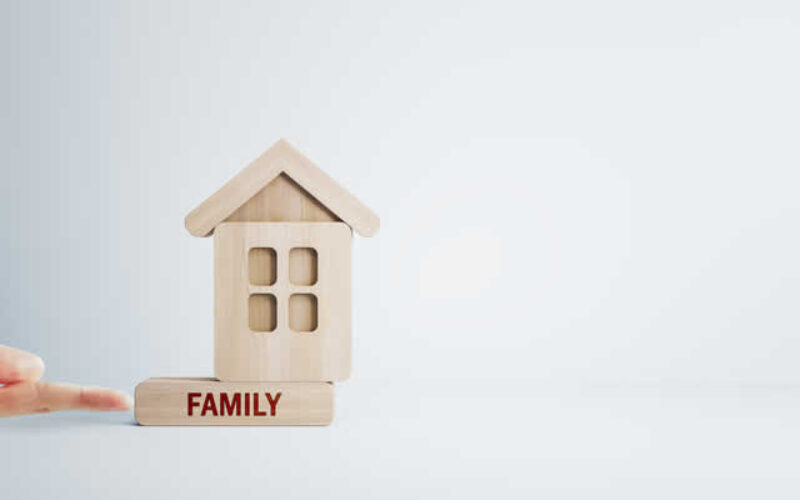Whether you’re downsizing, remote-working, or redefining career goals, the key lies in designing a life that integrates family proximity with independent momentum.
- post content
- TL;DR
- The Emotional Logistics of Moving Closer
- Reframing Independence as a Growth Asset
- How to Choose the Right Neighborhood
- Setting Healthy Boundaries with Family
- Designing an Independent Routine Near Family
- Making the Most of the Transition Professionally
- Product Spotlight: The Panda Planner
- FAQ
- Glossary
TL;DR
Moving near family doesn’t mean losing independence.
Choose neighborhoods that align with your lifestyle, set healthy boundaries early, and treat this as a growth phase for both relationships and career.
Use planning frameworks, community scouting, and continuous learning to strengthen both personal and professional foundations.
The Emotional Logistics of Moving Closer
Relocating isn’t just about changing addresses — it’s a recalibration of identity and rhythm.
For many, proximity to family offers emotional support and shared responsibility. Yet, unstructured closeness can blur boundaries and reduce autonomy.
Practical Takeaway
- Define “closeness” in both miles and emotional bandwidth.
- Maintain personal rituals (e.g., solo weekend plans, quiet hours).
- Communicate boundaries before unpacking boxes.
For deeper insight into lifestyle alignment, explore urban living checklists from Apartment Therapy and neighborhood dynamics guides at Nextdoor.
Reframing Independence as a Growth Asset
Independence isn’t isolation — it’s capacity.
Use this move as an opportunity to invest in growth, whether through local networks or new skills. Adult learners often find this period ideal for re-skilling or finishing degrees to enhance job security and flexibility.
That’s where structured, asynchronous learning — like a
bachelors of business administration — can help balance family proximity with personal development, ensuring that independence scales with education, not against it.
How to Choose the Right Neighborhood
Neighborhood Selection Checklist
| Criterion | Why It Matters | What to Evaluate |
|---|---|---|
| Commute & Access | Reduces friction for both work and family visits | Travel times, transit, nearby coworking spaces |
| Demographics | Determines local culture and community rhythm | Age diversity, family-to-single ratio |
| Noise & Privacy | Affects rest and focus | Visit at night/weekends |
| Growth Potential | Impacts long-term investment | Local business growth, schools, infrastructure |
| Emotional Fit | Supports mental balance | Green spaces, walkability, personal “vibe” |
Use interactive mapping tools like Niche and Walk Score to visualize lifestyle compatibility before committing.
Setting Healthy Boundaries with Family
Family Boundary Checklist
- Communicate Expectations:
Define frequency of visits and calls early. - Use Clear Language:
“I’d love Sunday dinners twice a month” is better than vague “let’s play it by ear.” - Maintain Your Schedule:
Keep independent plans visible in shared calendars. - Be Consistent:
Boundaries only work if enforced kindly and predictably.
If communication patterns strain, tools like Cozi help manage shared calendars without blending every moment.
Designing an Independent Routine Near Family
How-To: Balance Proximity with Personal Space
- Anchor Your Mornings —
start each day with a routine independent of family obligations. - Co-Create Support Systems —
divide family support (childcare, errands) to avoid emotional over-reliance. - Establish a “Third Place” —
café, coworking hub, or park that becomes your personal base. - Guard Mental Transitions —
use physical cues (closing laptop, walking the block) to separate personal from family time.
These micro-boundaries build autonomy while keeping you available for meaningful connection.
Making the Most of the Transition Professionally
Balancing family proximity and career growth requires intentional structure.
Consider these tactics:
- Re-map your commute network with hybrid work flexibility.
- Join local professional communities like Meetup or regional LinkedIn groups.
- Adopt asynchronous work tools (e.g., Notion, Slack, Trello) for flexible collaboration.
- Schedule “focus blocks” — treat them as sacred as family dinner time.
The result? You protect career momentum while staying geographically grounded.
Product Spotlight: The Panda Planner
Before finalizing your relocation strategy, consider using the Panda Planner, a science-backed productivity journal designed to improve focus, gratitude, and goal-setting.
Its guided daily pages help you align emotional, logistical, and professional priorities — especially valuable during transitions like moving closer to family. It’s particularly useful for individuals balancing remote work, caregiving, and personal growth.
FAQ
Q: How can I prevent burnout while living near family?
A: Keep a “personal reset ritual” — a daily walk or hobby that defines your personal space mentally and emotionally.
Q: What if my career limits flexibility?
A: Explore hybrid arrangements or part-time online education programs that add skill equity without full-time load.
Q: How do I handle unsolicited advice from family?
A: Use the “acknowledge and redirect” method — thank them for care, but remind them you’re making your own choices.
Q: How often should I visit?
A: Whatever frequency maintains warmth without resentment — often biweekly visits strike balance.
Glossary
- Asynchronous Learning –
Education that allows learners to engage on their schedule rather than in real-time sessions. - Third Place –
A social environment (like a café or coworking space) separate from home and work that anchors identity. - Boundary Ritual –
Repeated action signaling the start or end of shared family time. - Emotional Bandwidth –
The amount of mental and emotional capacity available for relationships or obligations.
Moving closer to family is both a homecoming and a transformation. It’s not about proximity alone — it’s about designing a sustainable rhythm that supports independence, connection, and growth.
By choosing the right neighborhood, setting firm yet loving boundaries, and aligning your career through flexible learning and intentional structure, you create not just a new address — but a new version of life that works in harmony.
Image Credit: moving closer to family by envato.com
end of post … please share it!
end of post idea for home improvement
view and analyze home improvement ideas at our LetsRenovate center
Helpful article? Leave us a quick comment below.
And please give this article a rating and/or share it within your social networks.






